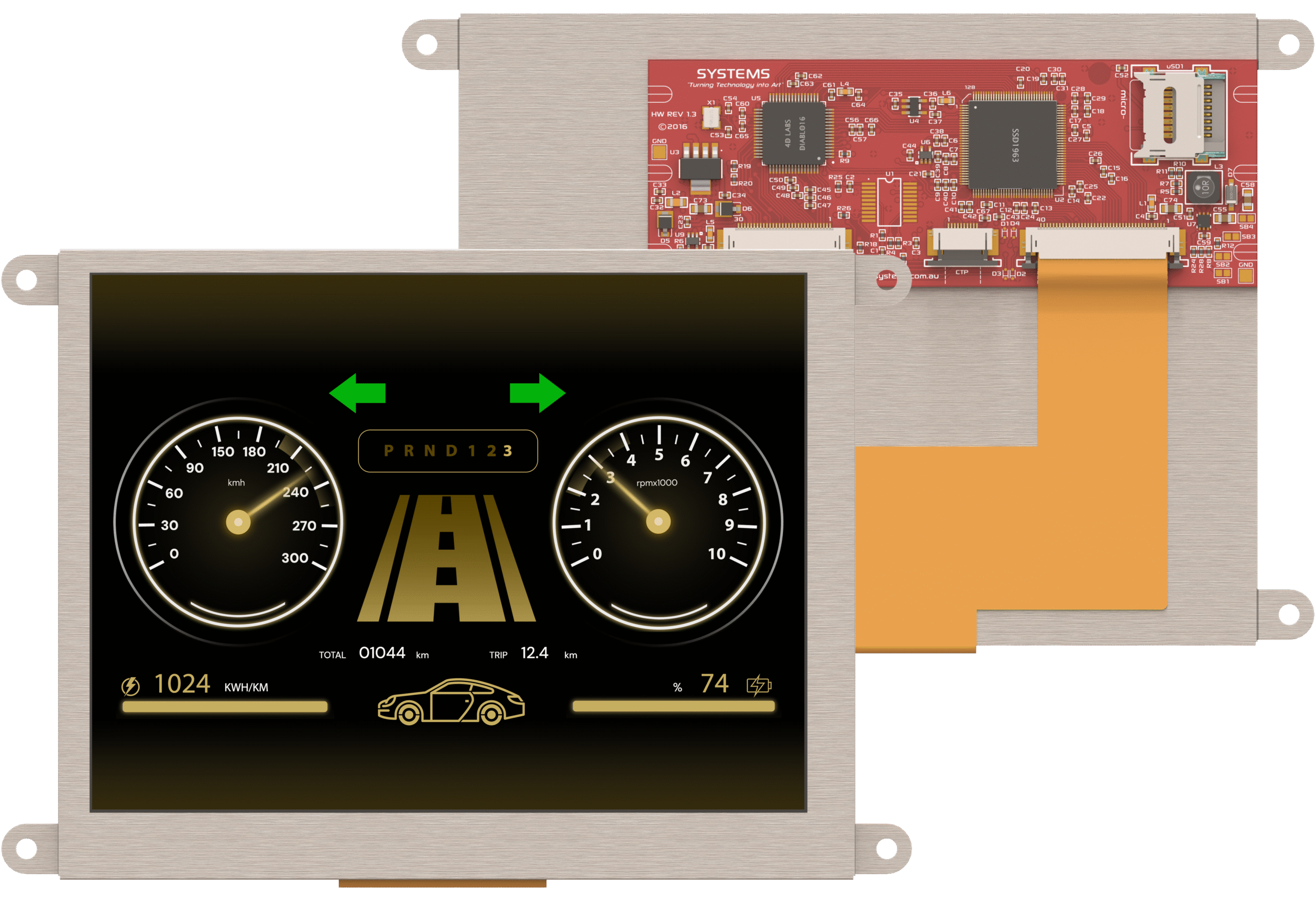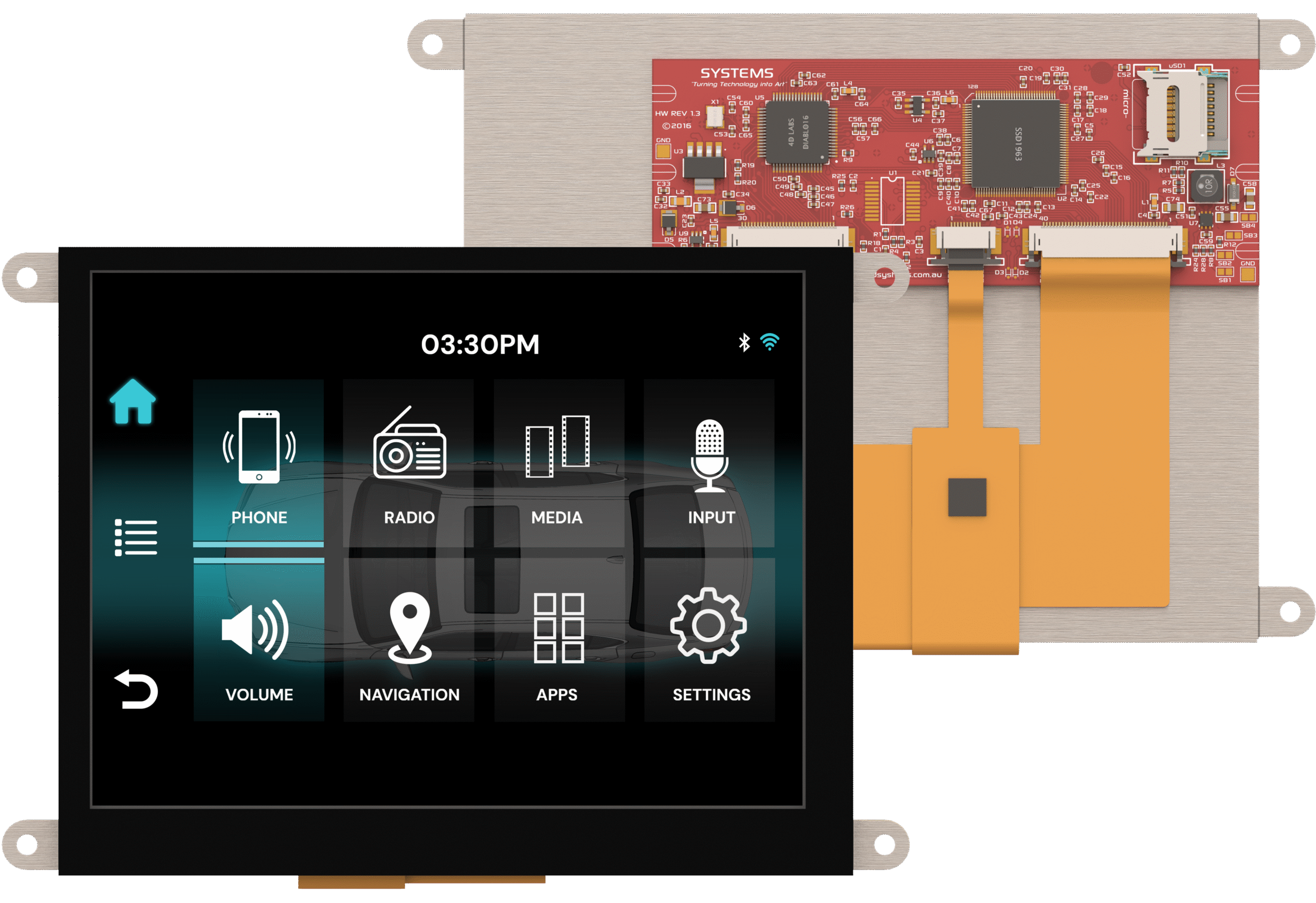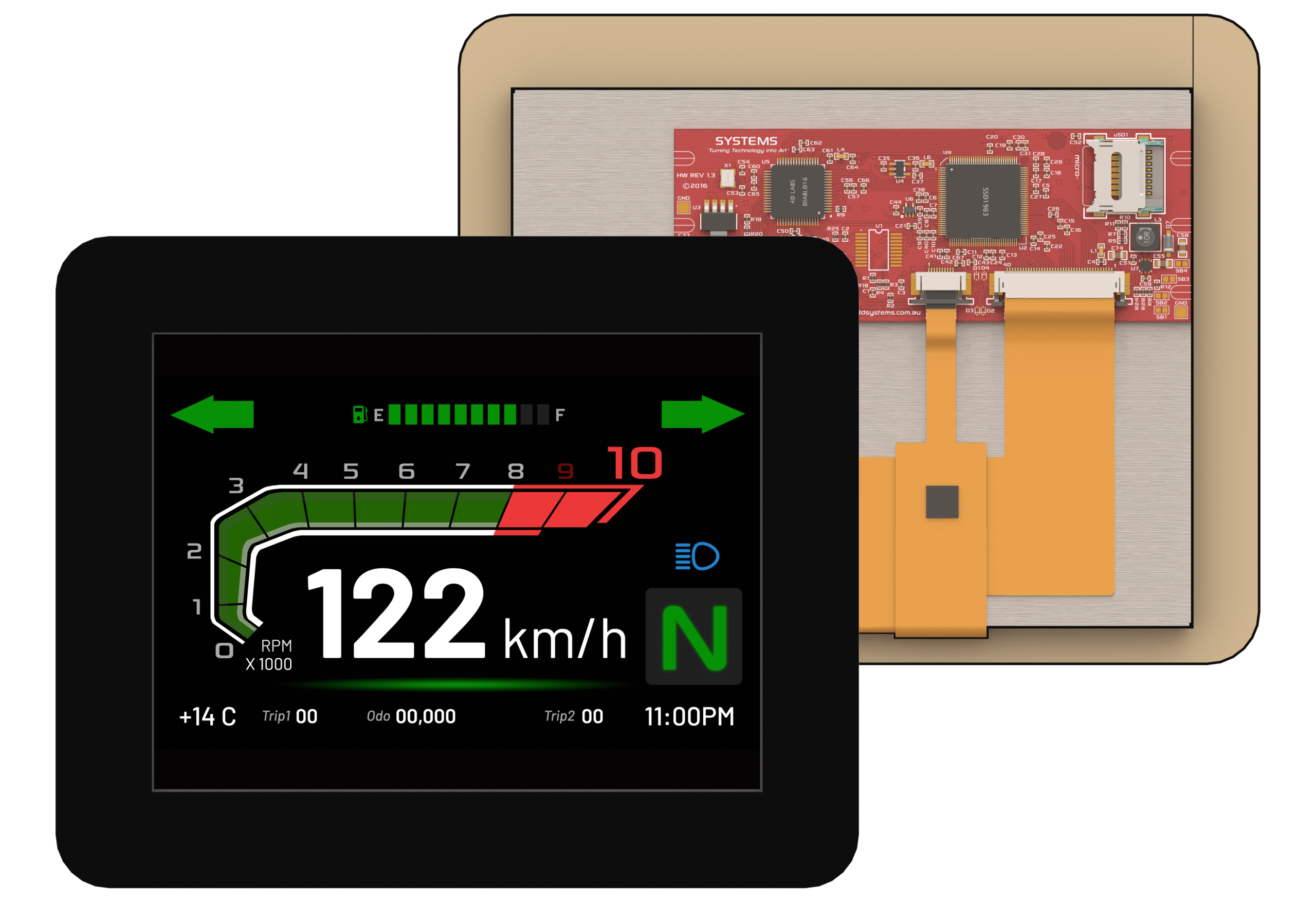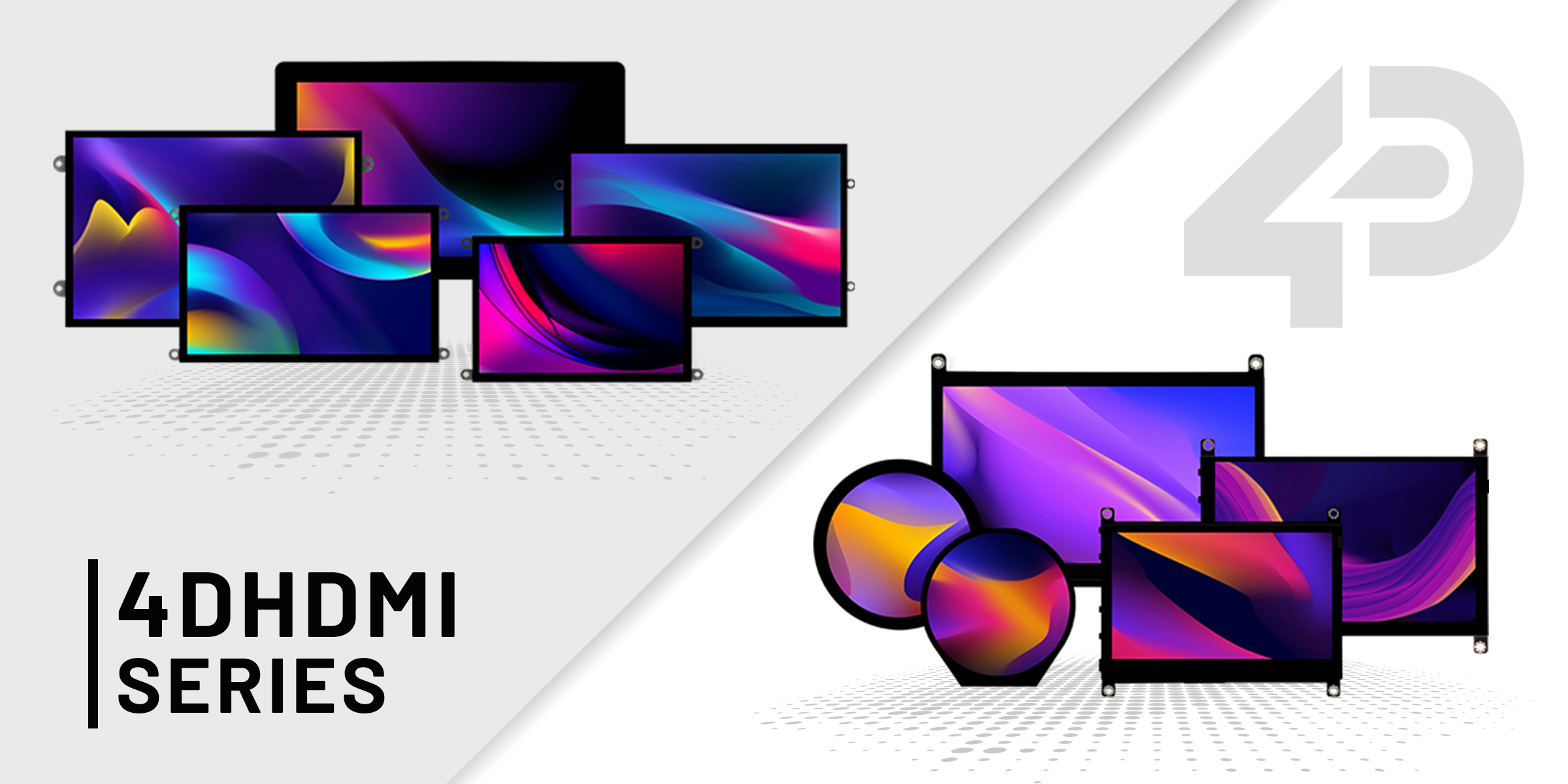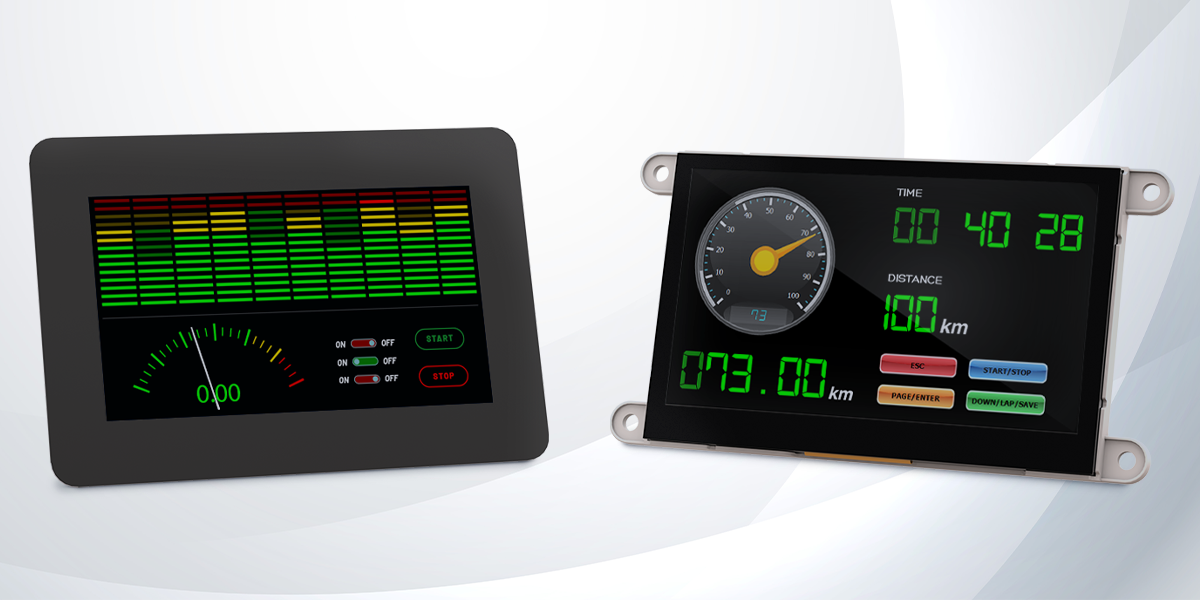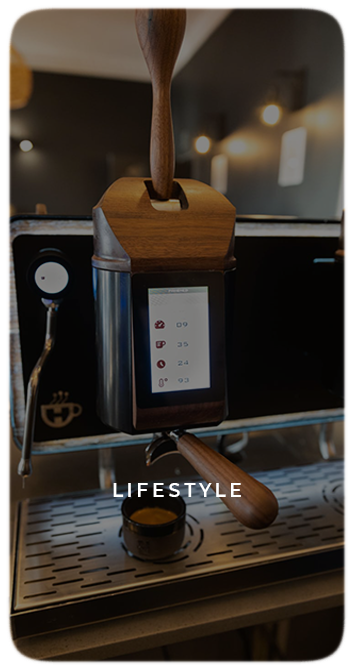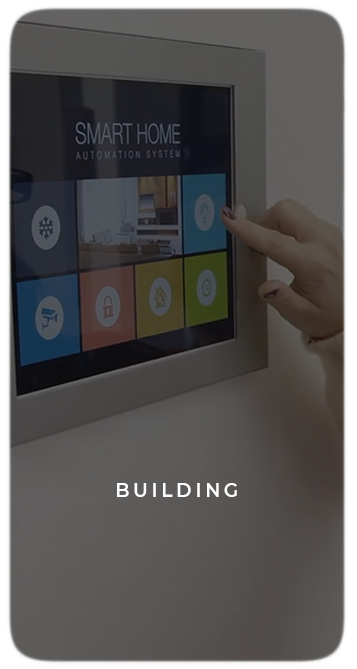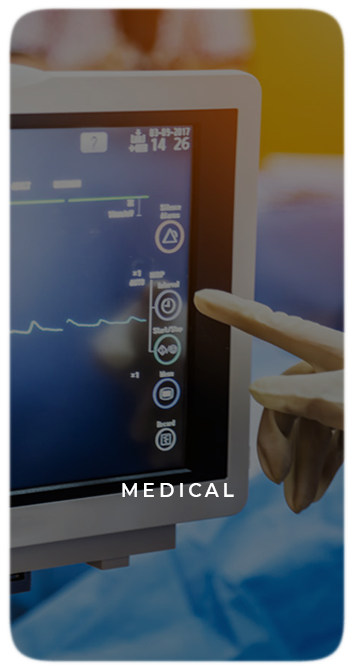Introducing the uLCD-56D Series: Expanding the microLCD Family
4D Systems is proud to announce the launch of the uLCD-56D Series, the newest addition to our microLCD family of intelligent displays. Designed to deliver enhanced performance, flexible options, and robust usability, the uLCD-56D Series offers engineers and product designers a professional-grade display solution powered by the proven DIABLO-16 processor.
Performance Powered by DIABLO-16
At the core of the uLCD-56D Series is the DIABLO-16 graphics processor, enabling rich graphics, smooth animations, and advanced functionality in a compact footprint. With full compatibility with the Workshop4 IDE, the uLCD-56D Series provides engineers with a straightforward development environment to create custom interfaces, optimise workflows, and accelerate time to market.
Series Variants
The uLCD-56D Series introduces three models to suit different application requirements:
- uLCD-56D: Non-touch model for simple display needs.
- uLCD-56DCT: Capacitive touch model for responsive, interactive interfaces.
- uLCD-56DCT-CLB: Capacitive touch with a Cover Lens Bezel for added durability and a sleek finish.
These options allow engineers to select the ideal model depending on whether touch interaction, ruggedized design, or non-touch solutions are required.
Key Features
- 5.6” Intelligent TFT Display
- DIABLO-16 Processor for advanced graphics capabilities
- Capacitive Touch Options for intuitive interaction
- Cover Lens Bezel Model for industrial and commercial environments
- Full support for Workshop4 IDE with multiple development environments
Applications
The uLCD-56D Series is built for flexibility across diverse industries. Applications include:
- Industrial human-machine interfaces (HMIs)
- Medical and laboratory equipment
- Test and measurement instruments
- Commercial devices requiring durable, interactive displays
- Automotive and transportation systems
Expanding the microLCD Ecosystem
The addition of the uLCD-56D Series expands the versatility of the microLCD family, ensuring engineers have scalable solutions for both compact and mid-sized intelligent display requirements. By combining Diablo16 performance with multiple display options, the uLCD-56D Series enhances system capability while reducing development complexity.
Availability
The uLCD-56D Series is available now from 4D Systems and our global distribution partners. Visit the product page for detailed specifications, datasheets, and ordering information.


